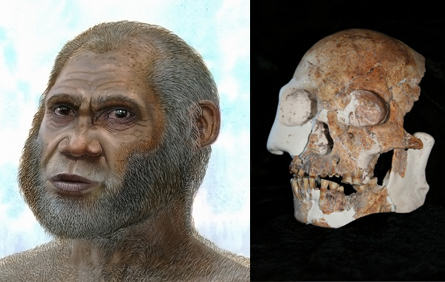Becoming human
Climate may have influenced the evolution of humans and other humanlike species
Share this:
- Share via email (Opens in new window) Email
- Click to share on Facebook (Opens in new window) Facebook
- Click to share on X (Opens in new window) X
- Click to share on Pinterest (Opens in new window) Pinterest
- Click to share on Reddit (Opens in new window) Reddit
- Share to Google Classroom (Opens in new window) Google Classroom
- Click to print (Opens in new window) Print

If you were to trace human evolution backward in time and space, you’d eventually end up in Africa. There, millions of years ago, animal species evolved to walk upright on two legs. This allowed them to spend more time on the ground than in the trees. Homo sapiens, the species you belong to if you’re reading this article, had appeared on the continent by 200,000 years ago. Your ancestors weren’t alone: Other upright, humanlike species were also around — at least for a while.
Scientists agree on Africa as a starting place because the oldest human bones have been found there. Eventually, ancient humans and other species moved to every other continent except Antarctica and the Americas. But once they left Africa, how they evolved, or changed over time, isn’t entirely clear. Eventually, every cousin in the sprawling human family — except H. sapiens — went extinct.
Climate may have played a big role in the evolution of ancient peoples. Two new studies suggest that during ice ages, steep drops in temperature may have sent ancient species moving to warmer areas. As a result, these species would have become isolated from other populations.
One of the new studies looks at bones found in caves in southwestern China. The bones came from an ancient species that looked much like H. sapiens, a team of scientists now reports. But it didn’t look exactly like our species. It’s possible that those H. sapiens looked different than others. They also could have belonged to a previously unknown humanlike species.
Darren Curnoe studied the bones from China. He told Science News that he suspects a new species could have formed when early humans left Africa 120,000 years ago and then evolved in isolation for tens of thousands of years. Anthropologists study humankind. Curnoe, an anthropologist from the University of New South Wales in Sydney, studies human evolution.
But the new bones also may represent a new species that arose when two other species interbred, says Christopher Stringer. An anthropologist at the Natural History Museum in London, he worked on the other study. He suggests the bones came from a group of ancient H. sapiens that moved into the area. He suspects they mated with a humanlike species called the Denisovans.
In their paper, Stringer and ecologist Jon Stewart from the Bournemouth University in England show how changes in climate have controlled the migration of different types of animals. Studies suggest, for example, that polar bears were once brown bears that became isolated in the north and then adapted to the polar cold.
Stringer and Stewart argue that changes in climate have had a major impact on the evolution and survival of people and humanlike species, too. Ice age conditions may have driven the H. sapiens in what is now China to live and mate with Denisovans.
The scientists also suggest that Neandertals, another species, may have evolved from an isolated humanlike population in western Asia during ice ages. In addition, the so-called “hobbits,” a short species known to scientists as Homo floresiensis, also may have evolved from other isolated humanlike species.
Not all scientists agree with the picture that Stringer and Stewart have outlined. Anthropologist Rick Potts works at the Smithsonian Institution in Washington, D.C. He told Science News that ancient species had to handle a wide range of environments. They probably could have adapted to the extremes brought on by the ice age, he says, and then would not have needed to seek safer areas.
POWER WORDS
anthropology The study of humankind.
ecology The branch of science that deals with the relations of organisms to one another and to their environments.
evolve To change gradually over successive generations.
species A group of living organisms consisting of similar individuals.
Neandertal An extinct species of human with a receding forehead and prominent brow ridges that was widely distributed in ice-age Europe between about 120,000 and 35,000 years ago.
ice age A time during a past geological period when temperatures dropped and glaciers formed.






